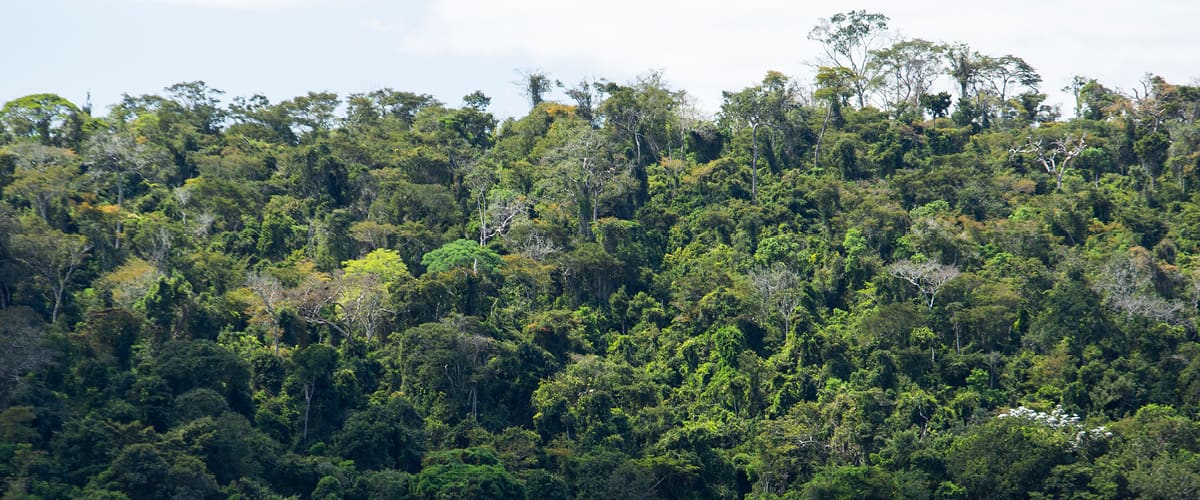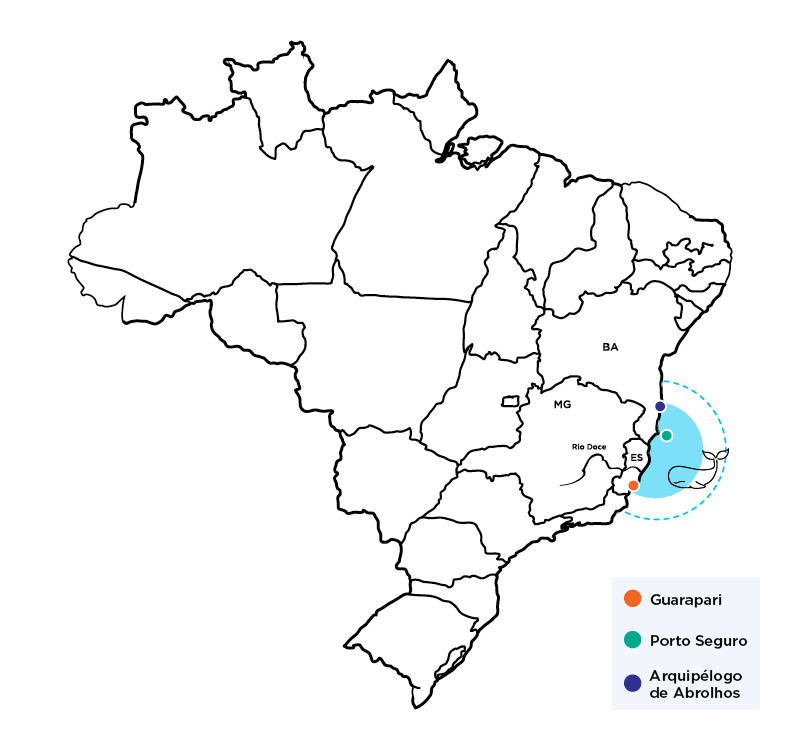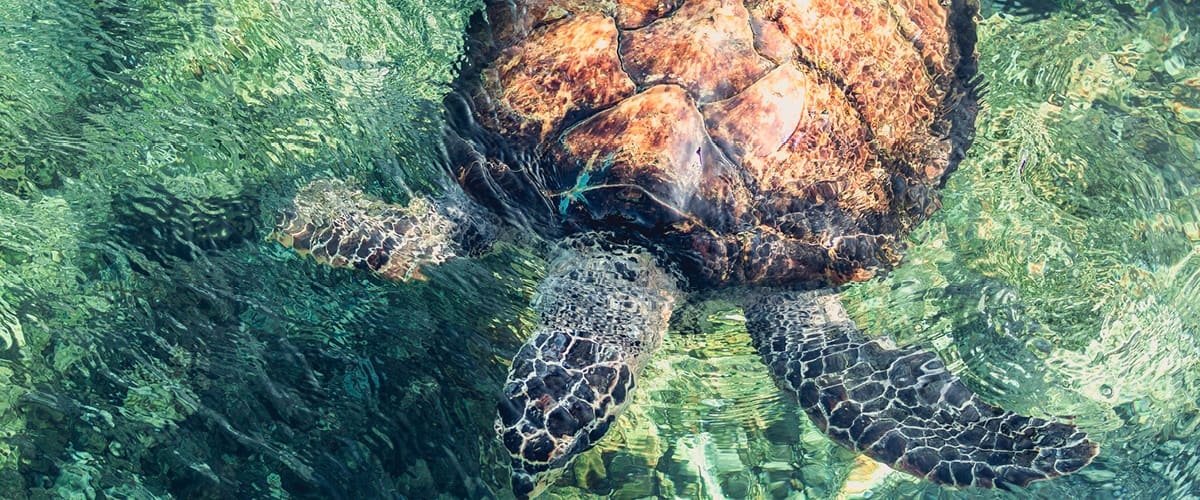From the river to the sea
WATER MANAGEMENT
The Doce River is now the most monitored in Brazil. And the more than 3 million data generated annually by the major monitoring program in the country – Systematic Qualitative and Quantitative Monitoring Program (PMQQS) – show that the conditions of the basin are today the same as before the dam failure. The comparison is possible because, previously, the water quality was analyzed by the Minas Gerais Water Management Institute (Igam), which started monitoring in 1997.
The same data that allow us to affirm the water from the Doce River is in similar conditions to those before the collapse ensure that it can be consumed after going through conventional treatment in the municipal supply systems. The water quality is analyzed before and after passing through the Water Treatment Plants (ETAs).
The verification, which is the responsibility of the local concessionaires, takes place in more than 300 points spread over 30 municipalities before the water is distributed to the population. PMQQS was implemented on July 31st, 2017 and is expected to last 10 years. The program makes an extensive and detailed monitoring, in real time, of the impacted water courses conditions.
Monitoring in 92 points on impacted watercourses
The goal is to monitor the evolution of water quality parameters in 92 points, from Mariana (MG) to the mouth, in Linhares (ES), over time. Twenty-two automatic stations transmit daily data, including subsidizing the preventive planning of basin supply systems.
The information is stored in a database and shared with environmental agencies. Since March 2019, the data has also been made available on the Renova Foundation website. Five bodies participate in this work, through a Technical Monitoring Group (GTA): National Water Agency (ANA), Brazilian Institute for the Environment and Renewable Natural Resources (Ibama), Chico Mendes Institute for Biodiversity Conservation (ICMBio), Minas Gerais Water Management Institute (Igam) and Espírito Santo State Water Resources Agency (Agerh).
The collected data show that the basin conditions are today the same as before the collapse
GATÃO DO MAR
One of the ways to monitor water quality on the coast is through a specialized vessel called “Gatão do Mar”. Developed to act in the survey of geochemical, physical-chemical and biological data, the vessel has a structure that allows the use of fundamental equipment for data acquisition and water and sediment quality analysis.
Every month, the oceanographers and analysts of the SocioEnvironmental Program of the Renova Foundation spend six days at sea and, during the trip of approximately 350 km, from the north coast of Espírito Santo to the south coast of Bahia, use probes and dredgers to measure and collect water samples, sediments, algae, plankton, fish, corals, beach sand and invertebrates, which are sent for analysis laboratory.
The action is also part of the Systematic Qualitative and Quantitative Monitoring Program (PMQQS).
BIODIVERSITY
Renova Foundation operates on two fronts for the biodiversity actions, both focused on providing subsidies for decision-making on actions for environmental preservation – these are studies of terrestrial flora and fauna and the Doce River aquatic biota and marine monitoring.
More than 30 educational, research, business and NGO institutions are partners of the Renova Foundation in these projects and mobilize a team of approximately 800 professionals.
From the result of this joint work, guidelines will be established for the preservation of the ecosystem along the Doce River on the impacted stretch, including the mouth and coastal zone of Espírito Santo, subsidies for assessing the consumption of fish in the diet and analyses of the clearance of fishing of native species with no threats to the local fauna, among others. The joint analysis of the collected data will also serve as subsidies for forest restoration since it will provide inputs to define areas for restoring forests.
Rapeld Method
The method foresees the division of the land into plots, something like trails of 250 meters, and of transects, delimitations that vary from one kilometre to five kilometres, to collect data on species of plants and animals
Wild Fauna Recovery
Another work front will act on the construction and equipping of two Wild Animal Screening and Rehabilitation Centers, one in Minas Gerais and another one in Espírito Santo. After the deliveries, the Renova Foundation will maintain the spaces for a period of three years.
TERRESTRIAL FAUNA AND FLORA
The monitoring will detect the residual metals levels in vertebrates and invertebrates, in the terrestrial flora, in the river islands and in the soil along the Doce River. The study is mapping land use and occupation, helping to identify the distribution and situation of forest remnants in the area.
AQUATIC AND MARINE BIOTA MONITORING
Partnership with the Espírito Santo Technology Foundation (FEST) and the Federal University of Espírito Santo (Ufes) for monitoring aquatic biodiversity in the Espírito Santo portion of the Doce River, mouth, estuary and coastal and marine regions. The results of the study will help to measure the impacts of the tailings on the environment and will be able to provide subsidies for the decision making on the quality of the fish and indicate eventual remedial measures
DOCE RIVER AND OCEAN NETWORK
In September 2018, Renova Foundation signed a Technical-Scientific and Financial Cooperation Agreement with the Espírito Santo Technology Foundation (Fest) and the Federal University of Espírito Santo (Ufes) to fund the research project of the Doce River and Ocean Network.
The Rio Doce Ocean Network, an academic collaborative network formed by researchers from 27 institutions across the country with the central coordination of Ufes, monitors physical and chemical aspects of the environments and biodiversity at around 200 points throughout the entire Espírito Santo portion of the Doce River and in the estuarine, coastal and marine regions, which comprise the mouth surroundings and the area that runs from Guarapari (ES) to Porto Seguro (BA). In total, the work mobilizes 526 people.
In the study, drones, aircraft and small, medium and large vessels are used. In addition, there are sensors of different types, satellite images and automated floats always equipped with specific instruments for this type of monitoring.
This is a large and complex study, with collections and analyzes from microorganisms to whales, and which is configured as a reference – in addition to being comprehensive, it integrates the knowledge of the river and marine environment, fundamental for the Doce River recovery. For this reason, the initiative can serve as a model for other basins in the country that are in a process of constant degradation and risk.
CONSERVATION UNITS
Also, as part of biodiversity actions, studies are underway to identify impacts on 40 Conservation Units (UCs) – natural areas subject to protection legally instituted by the government – that may have been directly or indirectly affected by the dam collapse. Partners were hired to carry out this diagnosis and measure any physical, biological and socioeconomic impacts, in order to support the remedial measures which are indicated as necessary.
The 40 Conservation Units undergo assessment and impact studies. As compensatory measures, the Renova Foundation will fund actions to consolidate two Conservation Units – the Doce River State Park (MG) and the Santa Cruz Wildlife Refuge (ES). The construction of the headquarters and the preparation and execution of the Management Plan for the new Environmental Protection Area (APA) at the mouth of the Doce River (ES), which will be created by the Federal Government, are also planned.
Research support
The Renova Foundation signed a Cooperation Agreement with the Minas Gerais State Research Support Foundation (Fapemig) for the issue of a public notice for the selection of projects focused on research, development, and innovation, for monitoring the biodiversity of Minas Gerais aquatic environments in areas impacted by the Fundão dam collapse.
The public notice, with wide competition, will select projects for six thematic lines of research: biogeochemical processes; sediment dynamics and hydrogeomorphology; aquatic biota (habitat structure); aquatic biota (communities, populations and bio invasion); ecotoxicity and riparian forests.
SEA TURTLE
An important parameter to assess biodiversity in the region of the Doce River mouth, the spawning of sea turtles, which takes place on the Espírito Santo coast, is monitored by the Pro-Tamar Foundation.
The region is one of the main turtle spawning hotspots in the country. In order to assess the impacts of the tailings which reached the sea, transported by the Doce River, the Renova Foundation and the Pró-Tamar Foundation are conducting a project to monitor the reproductive behavior of turtles in an area of 159 kilometres of shore in Espírito Santo, from Aracruz to Conceição da Barra. Spawning events are strictly registered to identify any change in the animal’s reproductive pattern, which has become a symbol of preservation in the region.
Within the monitored region, the highest concentration of nests occurs on both banks adjacent to the mouth of the Doce River, on the shores of Comboios and Povoação. The study is carried out throughout the year and reinforced during the turtle spawning phase, from September to March.
Among the monitored places are areas such as Comboios Biological Reserve, Comboios Indigenous Land, Povoação, Monsarás, Cacimbas, Ipiranga, Ipiranguinha, Pontal do Ipiranga, Barra Seca/Urussuquara, Campo Grande, Barra Nova and Guriri. The activities use the ProTamar Foundation protocols to mobilize local labor – fishermen and traditional residents of the coast – for the detection and monitoring of females, nests and baby turtles, considering the knowledge of the population.
Due to the sea turtle’s long life-cycle, the evaluation of the effects on these populations will only be possible in the long term.
FISHING
Renova Foundation works to restore the socioeconomic and environmental conditions for the resumption of aquaculture and fishing activities.
The results of studies and surveillance of biodiversity carried out in partnership between the Renova Foundation and specialized institutions should answer, among other questions, whether the fish is fit for human consumption. The construction of a database for monitoring and controlling of the fish stocks of the Doce River is also planned. After overcoming fishing restrictions in the basin, one of the main challenges will be to restore the market and consumer confidence. Renova Foundation works to certify the quality of the fish. In the current context, exotic species fishing is allowed in Minas Gerais.
The capture of native species is prohibited on the stretch of the Doce River in Minas Gerais and at some natural lagoons in the state as a way to ensure the repopulation of native species. The measure was applied by the State Forestry Institute (IEF). In Espírito Santo, an action by the Federal Public Ministry prohibits fishing in the coastal area of the Doce River mouth, up to 20 meters deep, between Barra do Riacho (Aracruz) and Degredo/Ipiranguinha (Linhares).
The release of the activity depends on the assessment of bodies linked to the Ministry of the Environment, the Health Surveillance National Agency (Anvisa) and regulators at the state level.
AQUAPONIC PROJECT
One of the initiatives of the Aquaculture and Fishing Resumption Activities Program in Doce River mouth is the pilot aquaponics project, called “Farming for Fishing” in partnership with the Federal Institute of Espírito Santo (IFES). The project foresees the training of fishermen from the communities of Areal, Entre Rios, Povoação and Regência, in Linhares (ES), for the production of fish in suspended tanks combined with vegetables through aquaponics technology (a farming system that unites pisciculture – fish farming – and hydroponics – growing plants with their roots submerged in water).
At first, six systems (each with a 5.5-meter diameter) will be installed in each community and, after one year, the fishermen themselves will evaluate the progress towards the implementation of three more systems in each community.
The pilot’s official launch took place in June 2019 at the contemplated communities. In the second semester of 2019, training courses (Super intensive Pisciculture, Hydroponics and Fish Processing) were performed to the fishermen participating in the project. Training continues in the first half of 2020, at the same moment that cooperative and associative workshops are offered to those affected, as a way of stimulating the sustainability of economic activities.






